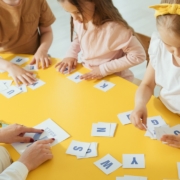Lesson Plan for Teachers on Add and subtract decimals
Lesson Title:Add and subtract decimals
Lesson Objective: Students will be able to add and subtract decimals with up to two decimal places.
Materials: Decimal cards (0.1, 0.2, 0.3, etc.), worksheets with decimal problems, calculators (optional)
Introduction (5 minutes): Begin the lesson by reviewing place value and how it applies to decimals. Use the decimal cards to demonstrate how the value of a decimal changes depending on its place (i.e. 0.4 is 4 tenths and 0.04 is 4 hundredths).
Direct Instruction (15 minutes): Using a whiteboard or overhead projector, demonstrate how to add and subtract decimals. Show examples of decimal problems and explain the steps to solve them. For example, when adding 0.3 + 0.4, explain that you must line up the decimal points and add the numbers in the tenths place and the hundredths place.
Guided Practice (20 minutes): Provide students with worksheets containing decimal problems. Allow students to work on these problems with a partner or in small groups. Monitor their progress and provide assistance as needed.
Independent Practice (20 minutes): Give students more decimal problems to work on independently. Encourage them to use a calculator if needed, but remind them to check their work and make sure their answers are reasonable.
Closure (5 minutes): Review the concepts covered in the lesson and ask students to share examples of decimal problems they found challenging and how they solved them.
Assessment: Collect and review student worksheets to assess their understanding of adding and subtracting decimals.
Note:










